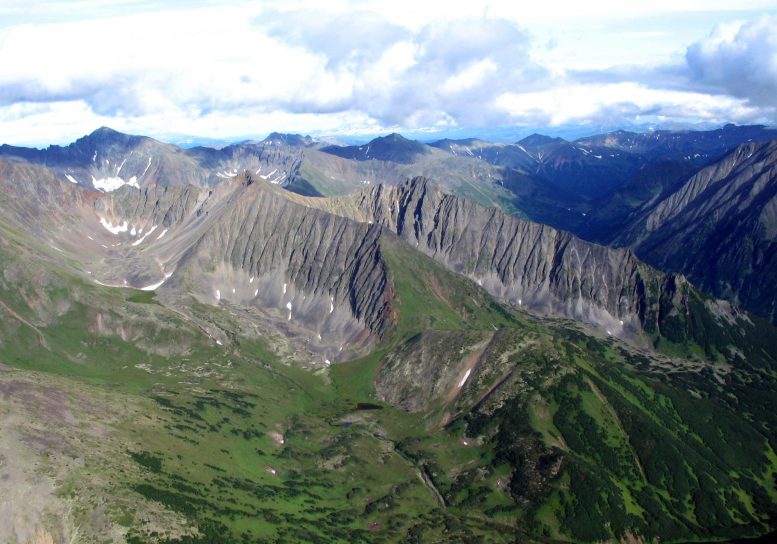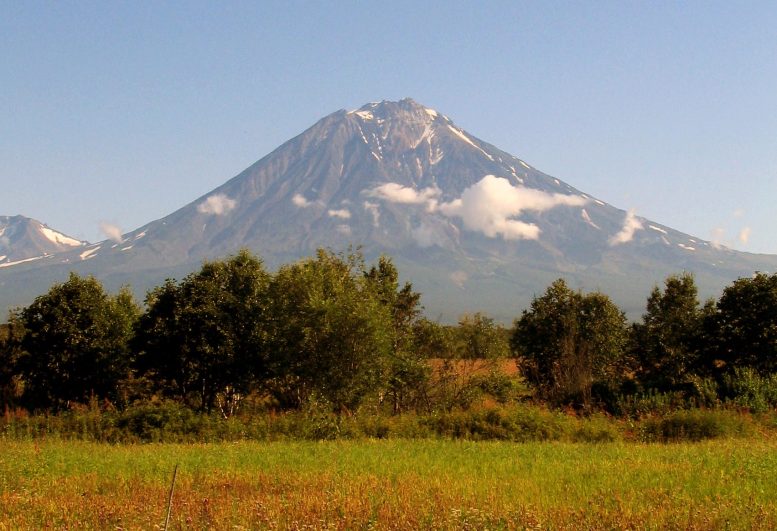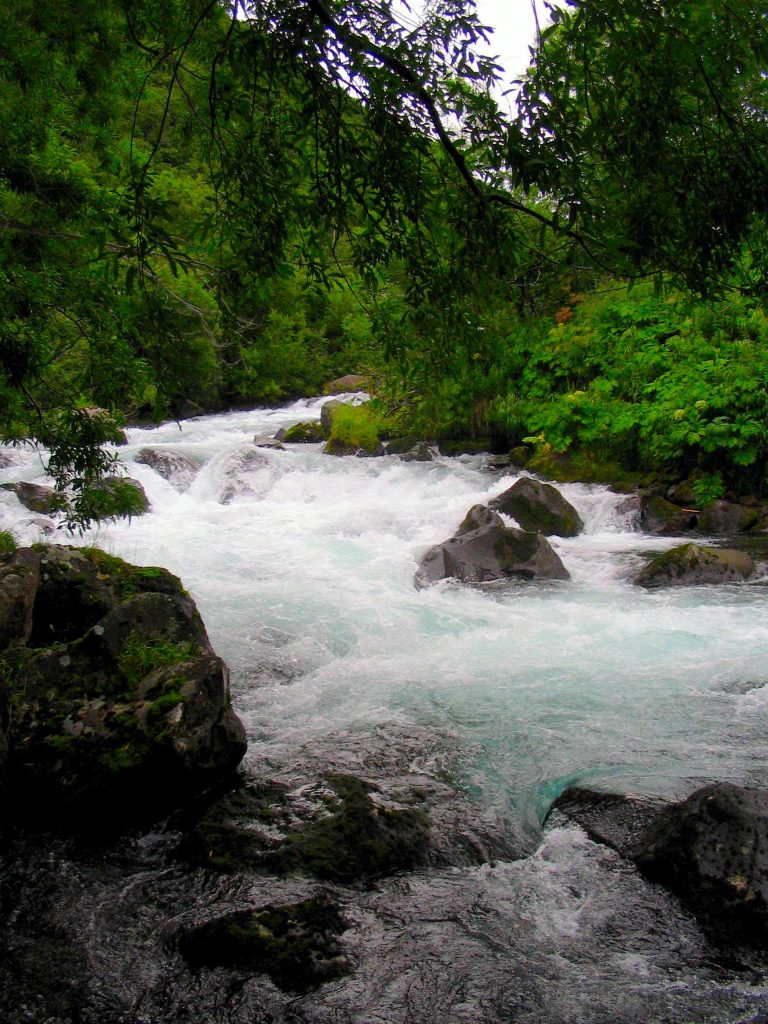Which of the Following Can Act Like a Long-term "Thermostat" for the Earth's Average Temperature?

Continental volcanic arcs such as this one in Kamchatka, Russia, are rapidly weathered, driving CO2 removal from the atmosphere over geological time. Credit: Tom Gernon, University of Southampton
Scientists at the University of Southampton have discovered that extensive chains of volcanoes have been responsible for both emitting and then removing atmospheric carbon dioxide (COtwo) over geological time. This stabilized temperatures at Earth's surface.
The researchers, working with colleagues at the University of Sydney, Australian National Academy (ANU), University of Ottawa, and University of Leeds, explored the combined impact of processes in the solid Earth, oceans, and atmosphere over the by 400 million years. Their findings are published in the journal Nature Geoscience .
Natural break-downward and dissolution of rocks at World'south surface is chosen chemic weathering. It is critically of import because the products of weathering (elements like calcium and magnesium) are flushed via rivers to the oceans, where they form minerals that lock up CO2. This feedback mechanism regulates atmospheric CO2 levels, and in plough global climate, over geological time.
"In this respect, weathering of the Earth's surface serves as a geological thermostat," says atomic number 82 author Dr. Tom Gernon, Associate Professor in Earth Science at the University of Southampton, and a Young man of the Turing Establish. "Just the underlying controls have proven difficult to determine due to the complexity of the Earth organization."

Present-day continental arc volcano in the Kamchatka Peninsula, Russian Far East. Credit: Tom Gernon, Academy of Southampton
"Many Earth processes are interlinked, and at that place are some major time lags between processes and their effects," explains Eelco Rohling, Professor in Bounding main and Climatic change at ANU and co-author of the written report. "Understanding the relative influence of specific processes within the Globe system response has therefore been an intractable problem."
To unravel the complexity, the squad constructed a novel "Earth network," incorporating machine-learning algorithms and plate tectonic reconstructions. This enabled them to identify the dominant interactions within the Earth system, and how they evolved through time.

Global chemic weathering has been dominated by volcanic arcs over the past 400 million years (pictured: a river draining Bakening volcano, Kamchatka Peninsula, Russia). Credit: Tom Gernon, University of Southampton
The squad found that continental volcanic arcs were the most important driver of weathering intensity over the by 400 million years. Today, continental arcs contain bondage of volcanoes in, for example, the Andes in South America, and the Cascades in the Usa. These volcanoes are some of the highest and fastest eroding features on Earth. Because the volcanic rocks are fragmented and chemically reactive, they are rapidly weathered and flushed into the oceans.
Martin Palmer, Professor of Geochemistry at the University of Southampton and co-writer of the study, said: "It's a balancing act. On one hand, these volcanoes pumped out large amounts of COtwo that increased atmospheric CO2 levels. On the other hand, these aforementioned volcanoes helped remove that carbon via rapid weathering reactions."
The study casts doubt on a long-held concept that Earth's climate stability over tens to hundreds of millions of years reflects a residual between weathering of the seafloor and continental interiors. "The thought of such a geological tug of war between the landmasses and the seafloor as a dominant driver of Earth surface weathering is non supported by the data," Dr. Gernon states.
"Unfortunately, the results exercise non mean that nature volition relieve us from climate change," stresses Dr. Gernon. "Today, atmospheric CO2 levels are college than at any fourth dimension in the past 3 meg years, and human-driven emissions are nearly 150 times larger than volcanic CO2 emissions. The continental arcs that announced to have saved the planet in the deep past are simply not nowadays at the scale needed to aid counteract present-day CO2 emissions."
Just the team'south findings withal provide critical insights into how guild might manage the current climate crisis. Artificially enhanced rock weathering — where rocks are pulverized and spread across state to speed up chemic reaction rates — could play a key office in safely removing COii from the atmosphere. The squad'due south findings propose that such schemes may be deployed optimally by using calc-alkaline metal volcanic materials (those containing calcium, potassium, and sodium), similar those found in continental arc environments.
"This is by no ways a silver bullet solution to the climate crunch — we urgently demand to reduce CO2 emissions in line with IPCC mitigation pathways, total stop. Our cess of weathering feedbacks over long timescales may help in designing and evaluating large-scale enhanced weathering schemes, which is just ane of the steps needed to counteract global climate change," Dr. Gernon concludes.
Reference: "Global chemical weathering dominated by continental arcs since the mid-Palaeozoic" by Thomas Chiliad. Gernon, Thea M. Hincks, Andrew Southward. Merdith, Eelco J. Rohling, Martin R. Palmer, Gavin Fifty. Foster, Clément P. Bataille and R. Dietmar Müller, 23 August 2021, Nature Geoscience.
DOI: 10.1038/s41561-021-00806-0
Post a Comment for "Which of the Following Can Act Like a Long-term "Thermostat" for the Earth's Average Temperature?"